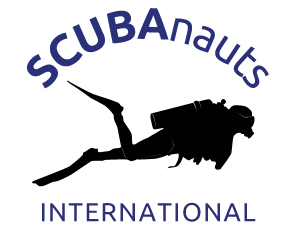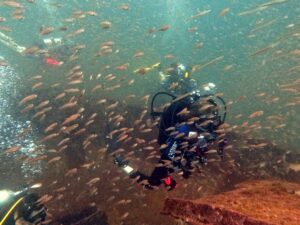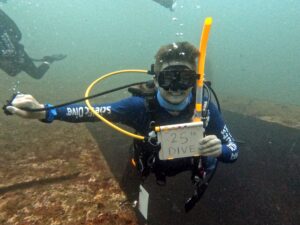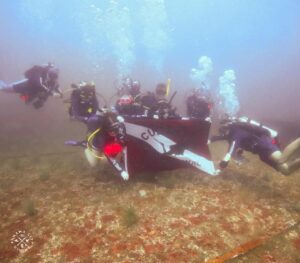The summer mission to Panama City, FL was a brand new trip that SCUBAnauts have never done before. It was fantastic! There were 14 total dives that where planned and 8 were scientific data collection dives. The science that we did had very interesting data, which the group projects used during the course of the trip.
Most of the science dives we did was what is called fish surveys. What we did was record the species of fish and the abundance. After the dives we would submit our data to the REEF public data base so it can be use for research papers and other scientific applications. We would also make paper copies of what diving we did that day so we could make a safe dive plan for everyone during the next day.
Not Just Data Collection
All of the non-science dives that we did were to get adjusted to the underwater environment and to try out new gear. On Tuesday we were given the chance to try full face diving masks with the Florida State University Panama City (FSU-PC) Advanced Science Diving and Underwater Crime Scene Investigation team. They were helping us through all of the trials and tribulations that came with the full face masks. The other non science dives were also with the FSU-PC underwater crime scene investigation team. We were able to see and run their side scan sonar. We were scanning the Black Bart shipwreck dive site so we could know the location before we got in the water and dove the site.
The other sites that we dove where just as interesting. Based on the analysis of my team’s data, the USS Strength was the dive site with the most fish, which shows the the reef is very healthy. This also is supported by the fact that the USS Strength was sunk before any other site that we dove this week. All of the other dive sites had a good amount of fish. Not as much as the USS Strength, but still a healthy amount. All of the sites that we dove were St Andrews State Park’s jetty, the Black Bart, the USS Strength, Los Pontoon, Morrison Springs, the Red Sea, and the Dan Safety Barge. The site with the smallest amount of life was Morrison Springs. There was a very small amount of fish but it was also a very popular place for people to have fun. This is where we did our full face mask training.
Friends of a Lifetime
All of the nauts that went on the summer trip were all great to be around. They’re all great divers and everyone learned at least one new thing by the end of the trip. They were all good and well behaved. All of our boat captains thought that we were wonderful divers and people. If I was given the opportunity to go on this trip all over again, I would pick up the opportunity in a heart beat. I do hope that this trip location becomes a regular location for SCUBAnauts and for more people to come and see all the reefs and see how helpful just one week can be for the science community and all of the members and researchers.
— Elijah M., Naut-in-Training, Tarpon Springs Chapter




